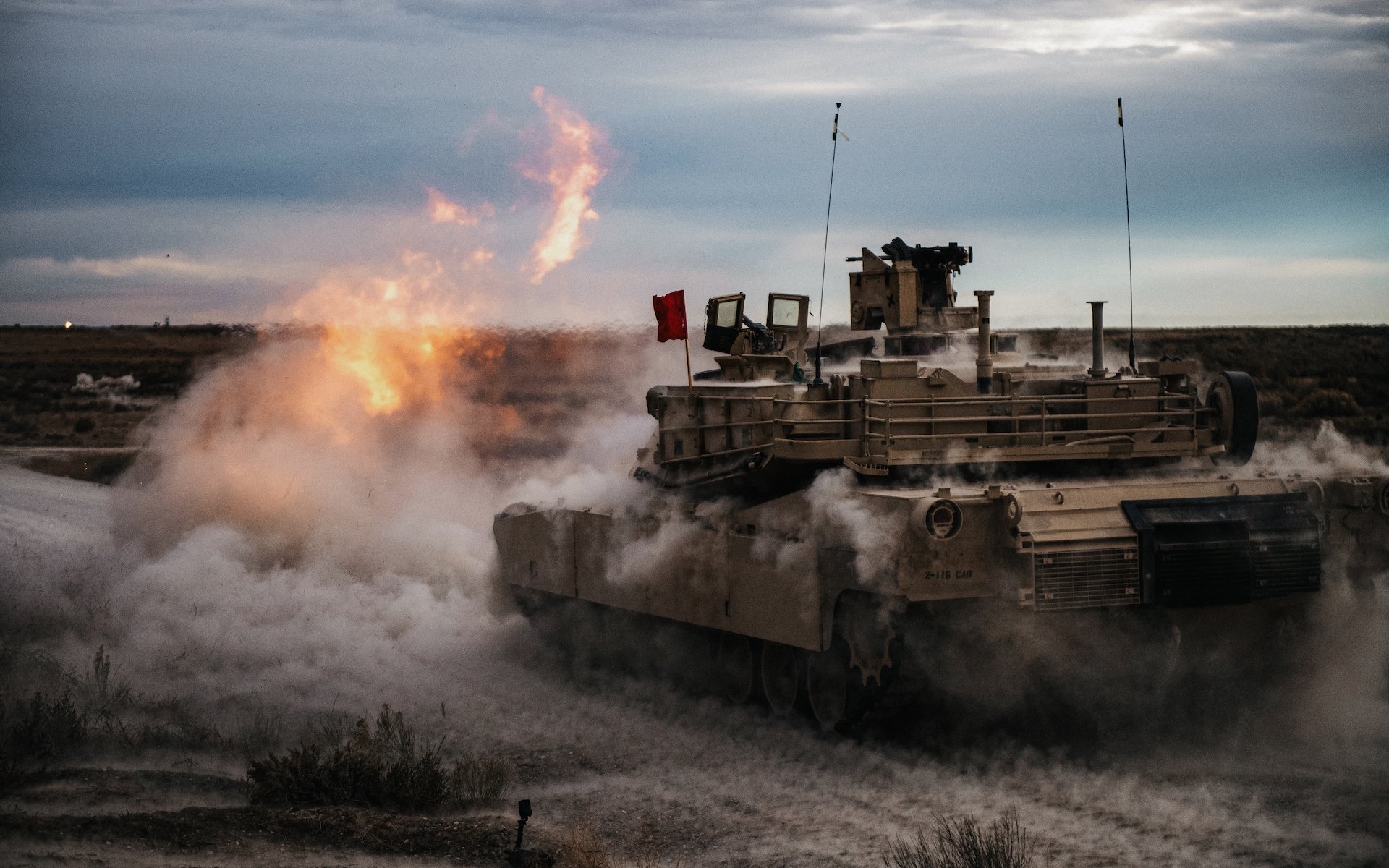
An M1A2 Abrams main battle tank conducts tank crew gunnery to ensure proficiency with their weapons systems on Nov. 11, 2019, at the Orchard Combat Training Center in Boise, Idaho. US National Guard photo by Sgt. Mason Cutrer.
The United States’ M1A2 Abrams tank is a 70-some-ton war machine armored in a composite of steel, ceramic, Kevlar, and depleted uranium. Its primary weapon is a beefy 120mm cannon that can obliterate a target from roughly 2 miles away. With a maximum speed of more than 40 mph, and the ability to travel hundreds of miles on a single tank of gas, it’s basically the apex predator of the modern battlefield.
Now, rewind more than 100 years, to the advent of tank warfare. It is probably safe to assume that the tankers of the early 20th century couldn’t have dreamt of a vehicle as lethal and durable as the M1A2 Abrams. Back then, being inside a tank was hardly any safer than being inside a tin can — a tin can that was quite big and easy enough to hit from a distance with a mortar or a rifle. First-generation tanks broke down frequently, moved at walking speeds, and could barely withstand small arms fire. They didn’t pack much of a punch, either. During World War I, the largest tank cannons measured only 75mm.
Yet, despite all their shortcomings, the slow, unreliable, clunky tanks of yore proved useful enough in combat to forever change the nature of warfare. They were also the first step in an evolution that would ultimately lead to the creation of such modern marvels as the M1A2 Abrams. Of course, there were many steps in between. Here are six considered to be the most important, beginning with the M1917.

Lt. Col. George S. Patton stands in front of a French Renault FT at the Tank Corps School near Langres, France, on July 15, 1918. The first American-made tank was the M1917, a copy of the Renault FT. Army Signal Corps photo by Sgt. L. Rode via the National Archives.
M1917 Light Tank
The first American tank wasn’t American at all. It was French.
In April 1917, the United States entered World War I without a single tank in its arsenal. As a stopgap, France and the United Kingdom supplied the US Tank Corps with vehicles from their own inventories.
Long term, however, the US would have to start manufacturing its own tanks or risk the Allies’ stockpile becoming depleted. To jump-start American production, France shared its blueprints for the Renault FT, which is widely considered to be the first modern tank.
In late 1918, after overcoming production setbacks, three American companies began manufacturing the Renault FT for US forces. But the American-made version, designated the M1917, would never see combat during WWI, as the tanks didn’t arrive in Europe until after the armistice was signed on Nov. 11, 1918.
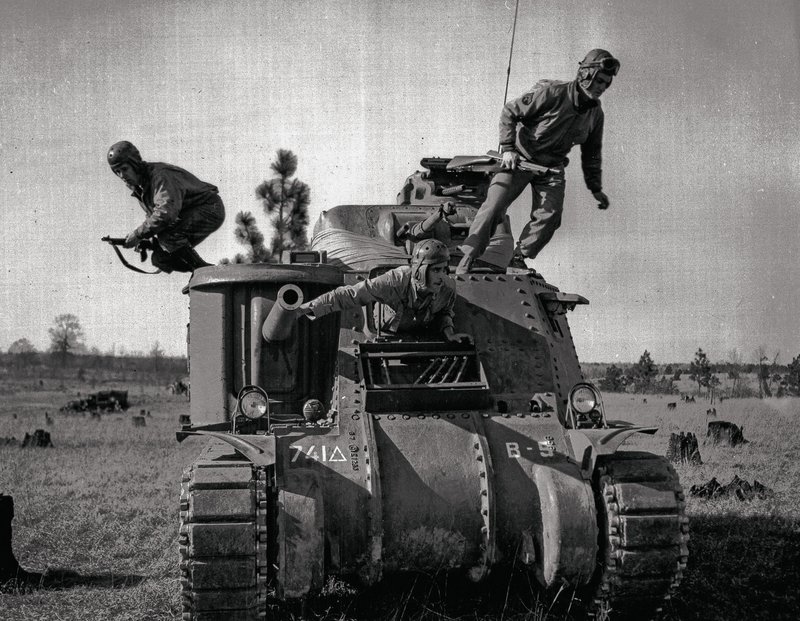
Cpl. Larry Corlett, Pvt. Murril Chapman, and Pvt. Louis Robles abandon a disabled M3 Lee medium tank during maneuvers at Camp Polk, Louisiana, on Feb. 12, 1943. Army Signal Corps photo by Sgt. Calvano via US Army Center of Military History.
The M3s
Fast-forward two decades to World War II. This time, American armor preceded American troops in joining the fight. As early as March 1941, Uncle Sam began supplying tanks to European allies through Lend-Lease agreements. The nature of the agreements allowed President Franklin D. Roosevelt to provide materiel support to the Allies even while the US remained technically neutral.
Through the Lend-Lease program, the US sent two types of armored vehicles to Europe prior to officially entering the war: the M3 Stuart light tank, followed later by the M3 Grant/Lee medium tank. Both vehicles saw combat with the British in North Africa, and both ultimately proved inadequate in the face of German armor. The Stuart was outgunned, and the Grant’s high profile was an easy target.
A new tank would soon overshadow them both.
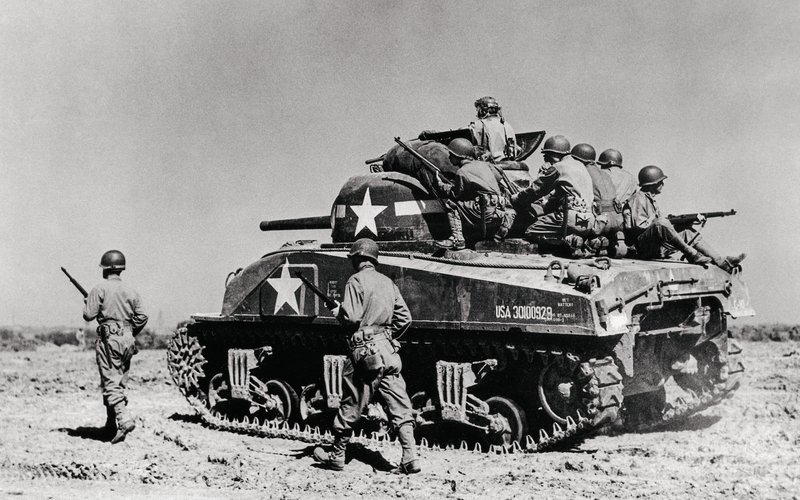
During World War II, US Army infantrymen accompany an M4 Sherman tank in combat maneuvers somewhere in England. US Signal Corps photo via AP.
M4 Sherman Medium Tank
Enter the M4 Sherman. The versatile, American-made medium tank was specifically designed to rival German Panzers. To that end, it performed well enough, and certainly better than the M3s. On the battlefield, it held its own against Nazi medium tanks, but was no match for the larger Panther and Tiger. Nevertheless, the M4 Sherman would become America’s armored workhorse during the Second World War. Taking into account the tank’s deficiencies, the US leveraged its industrial might to ensure that what the M4 lacked in firepower, it more than made up for in numbers. More than 50,000 M4s were manufactured between 1942 and 1945.

Soldiers from the 9th Infantry Regiment, 2nd Infantry Division, sit atop an M26 Pershing tank while awaiting an enemy attempt to cross the Naktong River in South Korea on Sept. 4, 1950. US Army photo by Cpl. Thomas Marotta via the National Archives.
M26 Pershing Heavy/Medium Tank and M46 Patton Medium Tank
In 1944, the M26 Pershing heavy/medium tank became the last breed of American tank to enter the Second World War. By the time the Korean War started six years later, the M46 Patton medium tank had also joined the American arsenal. Both the M26 and M46 were equipped with 90mm cannons, an upgrade from the 75mm main gun carried by the Sherman.
Despite being somewhat outdated, the M4 Sherman remained in service throughout the 1950s. In fact, it was the first medium tank fielded in Korea, followed by the M26 and M46. Working together, the trio of American tanks made light work of North Korea’s Soviet-built armor during the opening phases of the conflict.
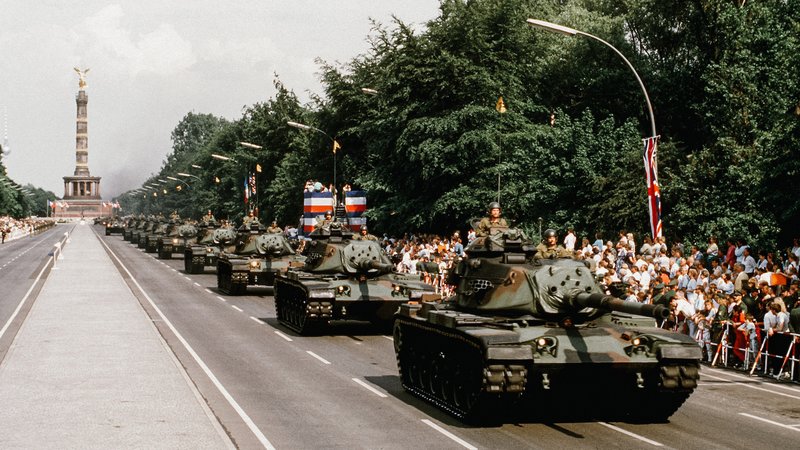
A column of US Army M60A1 main battle tanks drives along 17th of June Street in West Berlin during the annual Allied Forces Day parade on June 17, 1989. National Archives photo.
M60 Patton Main Battle Tank
The jungles of Southeast Asia were not ideal terrain for tank warfare. Still, the M48 Patton, as well as the M551 Sheridan light tank, played important roles in the Vietnam War, usually supporting infantry and reconnaissance missions. Meanwhile, the brand-new M60 Patton was needed elsewhere, as a show of strength.
At the height of the Cold War, Western Europe lived under the looming threat of a Soviet ground invasion. As this posed a problem for all NATO countries, the US and its allies began deploying tanks to West Germany to hold the line against the Warsaw Pact. The M60 was one of those tanks.
The development of the M48 and M60 marked a significant shift in the US military’s approach to armored warfare, as they introduced the concept of the main battle tank. Essentially, MBTs are tanks that can do it all. They combine a light tank’s speed and maneuverability with heavy protection and super-heavy firepower.
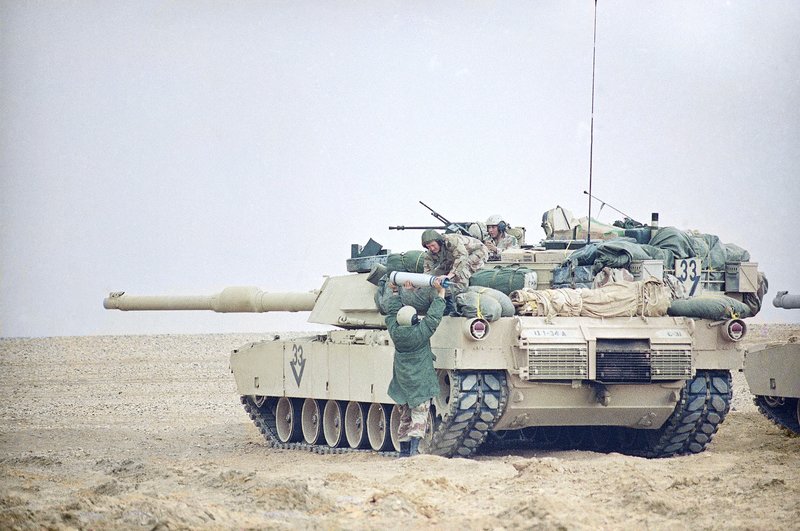
En route to battle positions during the Persian Gulf War, US soldiers from the 101st Infantry Division load an M1A1 Abrams tank on Jan. 21, 1991, in northeastern Saudi Arabia. AP photo/Peter Dejong.
M1 Abrams Main Battle Tank
Alas, that brings us full circle, back to the M1 Abrams main battle tank. The Abrams entered service in 1980. Since then, two newer versions have been developed. The M1A1 rolled off the assembly line in 1985, followed by the M1A2 one year later.
Read Next: ‘I Want YOU’: 5 of America’s Best WWI Recruitment Posters
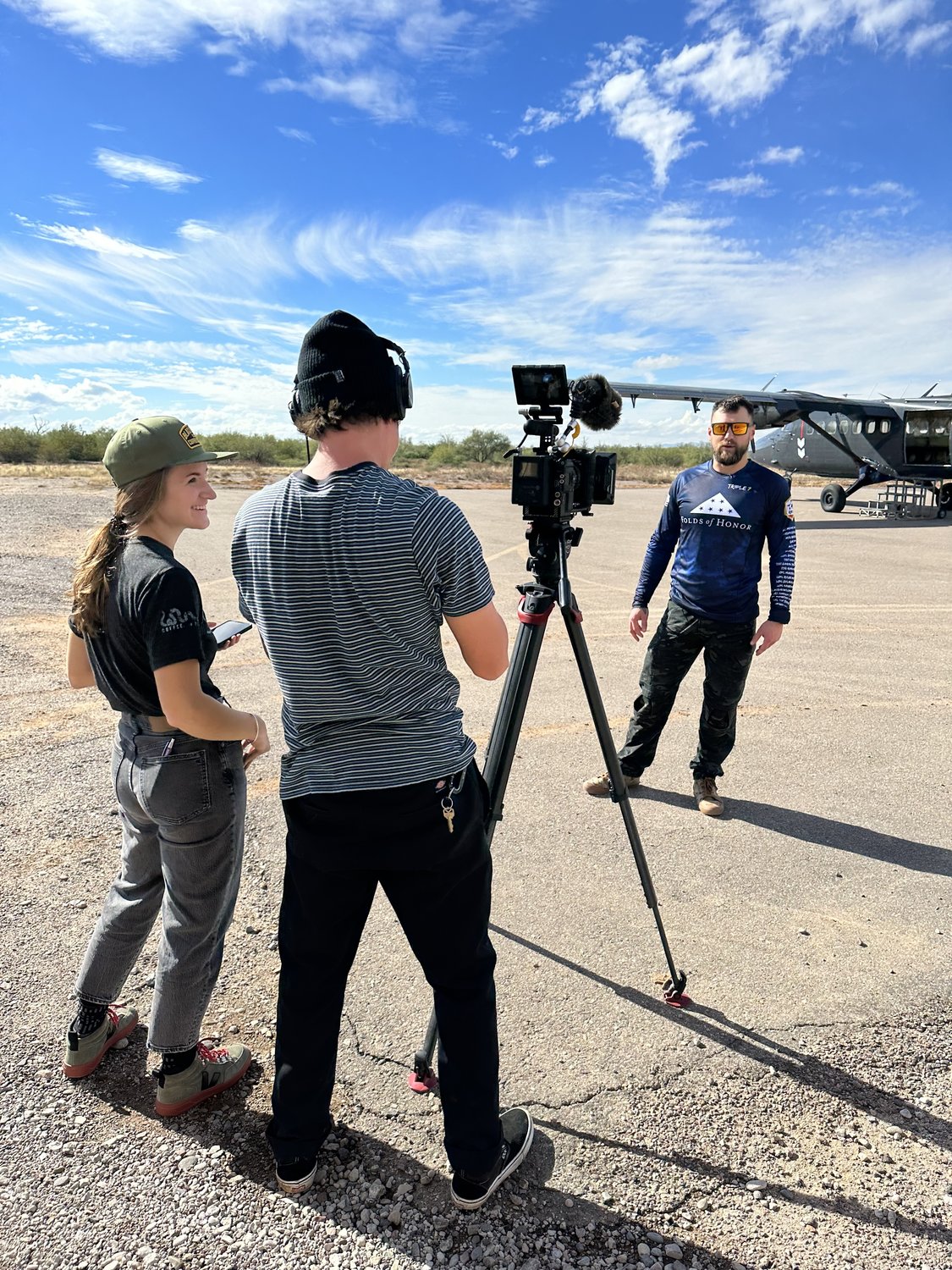
Jenna Biter is a staff writer at Coffee or Die Magazine. She has a master’s degree in national security and is a Russian language student. When she’s not writing, Jenna can be found reading classics, running, or learning new things, like the constellations in the night sky. Her husband is on active duty in the US military. Know a good story about national security or the military? Email Jenna.
BRCC and Bad Moon Print Press team up for an exclusive, limited-edition T-shirt design!
BRCC partners with Team Room Design for an exclusive T-shirt release!
Thirty Seconds Out has partnered with BRCC for an exclusive shirt design invoking the God of Winter.
Lucas O'Hara of Grizzly Forge has teamed up with BRCC for a badass, exclusive Shirt Club T-shirt design featuring his most popular knife and tiomahawk.
Coffee or Die sits down with one of the graphic designers behind Black Rifle Coffee's signature look and vibe.
Biden will award the Medal of Honor to a Vietnam War Army helicopter pilot who risked his life to save a reconnaissance team from almost certain death.
Ever wonder how much Jack Mandaville would f*ck sh*t up if he went back in time? The American Revolution didn't even see him coming.
A nearly 200-year-old West Point time capsule that at first appeared to yield little more than dust contains hidden treasure, the US Military Academy said.












